Paseando por Muel, el pueblo de la cerámica // Strolling through Muel, the pottery village
Click here to read this post in English

Hola querido hiver.
Hoy compartiré contigo el paseo que di por el pueblo de Muel el día en que visité su ermita, a la que ya dediqué un post para ella sola porque lo merecía. Precisamente ese será nuestro punto de partida, pues habíamos aparcado el coche al lado y al quedar en un extremo del pueblo podíamos hacer una ruta casi circular.
Lo primero que hacemos es atravesar el puente sobre el río Huerva. Hay una senda que transcurre paralela a su curso y algún día iremos a conocerla. Por el momento lo más destacable son las casas que casi cuelgan sobre el barranco y que cuentan con esos balcones con vistas privilegiadas a la ermita y a la antigua cantera romana.
Muel es conocido por su cerámica y la encontramos en cada punto que miremos, sean aplicaciones tradicionales o en forma de arte moderno. Durante casi un milenio el pueblo estuvo lleno de artesanos que desde finales del siglo XIX fueron abandonando el oficio por no resultar rentable. Sin embargo, la fama permaneció y desde hace varias décadas hay un resurgir que se ha impulsado tanto por parte de los lugareños como por las instituciones.
Las construcciones son humildes. Tan solo en la plaza central del pueblo encontramos algunos edificios con más relieve y que destacan sobre las casas bajas. Aún así, están elaborados principalmente con ladrillo y escasos ornamentos.
Como ocurre en prácticamente todos los pueblos en España, el punto más alto es la torre de su iglesia. No pudimos entrar y está rodeada por calles de poca anchura que no permiten fotografiarla como me hubiera gustado. En ella encontramos de nuevo la cerámica que tan bien se integraba en el arte mudéjar.
A partir de aquí me fui fijando en cada elemento con la cerámica como protagonista. La encuentras en los carteles de los comercios (arriba el de la carnicería), como en murales y hasta en la tapia de la escuela. En ella había varios conjuntos de azulejos cuyos dibujos habían sido realizados por niños del pueblo. Me pareció una manera muy bonita de implicar y motivar a los pequeños a continuar con la tradición del lugar.
¡No mires solo las paredes! Cuida dónde pones los pies, o pisarás pequeñas artesanías.
La parte más antigua me encantó. A pesar de que la mayor parte de las casas estaban cerradas y con evidentes señales de que necesitan una reforma integral, de vez en cuando aparecieron rincones que me recordaron al pueblo de mi madre, con sus casas de piedra encaladas. En esa zona hice algunas pruebas fotográficas con detalles que tengo idea de editar y compartir en blanco y negro en otra publicación.
Seguimos con los detalles de cerámica incrustados en las casas. Cabe reseñar que cuanto más modernas son, más apliques contienen.
Casi sin darnos cuenta llegamos de nuevo al puente que cruza el río Huerva. Pero cuando pensábamos que nuestro paseo estaba por finalizar, no sé qué instinto tuve de subir una corta pero empinada cuesta que quedaba a nuestra izquierda. ¡Lo que descubrí fue prácticamente lo mejor de todo este recorrido!
Arriba se abría una pequeña explanada que resultó ser lo poco que queda de un antiguo castillo. Apenas unos muros de ladrillo aguantan el paso del tiempo. Pero las vistas desde allí eran increíbles, pudiendo ver el conjunto de la ermita y de la cantera y presa romanas.
Muestra de que es un lugar de gran interés es que en ese día estaban rodando un reportaje para la televisión, es sorprendente la cantidad de personas que están involucradas en una pieza audiovisual por sencilla que sea.
Y todavía quedaba una sorpresa más: entre las hierbas de la explanada nos encontramos con restos de un taller de cerámica. En unas cajas había azulejos, otras contenían frascos con esmaltes y pinturas secos o fragmentos de piezas rotas.
Imaginamos que alguien había hecho limpieza y no se molestaron en llevar todo esto a la basura... Me quedé con ganas de llevarme algunas de esas pequeñas piezas redondas, más por lo curioso del hallazgo que por encontrarles alguna utilidad. Finalmente lo dejamos todo como lo habíamos encontrado.
En la parte contraria de la explanada del castillo pude capturar otro par de bonitas panorámicas. En la de arriba se puede atisbar la gran llanura del valle del río que casi se confunde con el cielo. El día nublado aunque apagaba los colores también permitía que no hubiera sombras o reflejos que molestaran y empañaran las fotos.
Ahora sí que dimos por concluida nuestra visita. Bajamos de nuevo la pendiente del castillo para terminar en la puerta de la ermita, no sin antes registrar otro par de elementos cerámicos, que era parte de lo que habíamos venido a buscar. ¡Misión cumplida!
Hasta la próxima publicación. Mientras tanto, ¡cuídate!

Herramientas: Cámara iPhone 13 Pro, editor de fotos Mac.
Mis publicaciones en Worldmappin pinchando aquí
Si te gusta lo que publico, únete a mi Fanbase pinchando aquí

©️Copyright 2025 Paloma Peña Pérez. Todos los derechos reservados.


Hi, dear hiver.
Today I will share with you the walk I took through the village of Muel the day I visited its hermitage, to which I have already dedicated a post for it alone because it deserved it. This will be our starting point, as we had parked the car next to it and, being at one end of the village, we could make an almost circular route.
The first thing we do is cross the bridge over the river Huerva. There is a path that runs parallel to its course and one day we will visit it. For the moment, the most outstanding features are the houses that almost hang over the ravine and that have balconies with privileged views of the hermitage and the old Roman quarry.
Muel is known for its pottery and we find it everywhere we look, whether in traditional applications or in the form of modern art. For almost a millennium the village was full of craftsmen who, from the end of the 19th century onwards, abandoned the trade because it was not profitable. However, the fame remained and for several decades now there has been a resurgence that has been promoted both by the locals and by the institutions.
Tr: Town Hall
The buildings are humble. Only in the central square of the village are there a few buildings with a higher profile that stand out from the low houses. Even so, they are mainly made of brick with little ornamentation.
Tr: San Cristobal Agricultural Cooperative
As in practically all villages in Spain, the highest point is the church tower. We were not able to enter and it is surrounded by narrow streets that do not allow us to photograph it as I would have liked. Here again we found the ceramics that were so well integrated into Mudejar art.
Tr: Carlos butcher's shop
From here I started to look at every element with ceramics as the protagonist. You find it on the posters of the shops (above the butcher's), on murals and even on the wall of the school. There were several sets of tiles whose drawings had been made by children from the village. It seemed to me a very nice way to involve and motivate the children to continue the local tradition.
Don't just look at the walls! Watch where you put your feet, or you will step on small crafts.
I loved the older part of the town. In spite of the fact that most of the houses were closed and with obvious signs of needing a complete renovation, from time to time there were corners that reminded me of my mother's village, with its whitewashed stone houses. In this area I took some test shots with details that I plan to edit and share in black and white in another publication.
Tr: Our Lady Virgin of the Fountain
We continue with the ceramic details embedded in the houses. It is worth noting that the more modern they are, the more sconces they contain.
Almost without realising it, we arrived back at the bridge that crosses the river Huerva. But just when we thought our walk was about to end, I don't know what instinct I had to climb a short but steep slope to our left. What I discovered was practically the best part of the whole route!
At the top was a small esplanade which turned out to be what little remained of an ancient castle. Barely a few brick walls stand the test of time. But the views from there were incredible, and you could see the whole of the hermitage and the Roman quarry and dam.
Proof that it is a place of great interest is that on that day they were filming a report for television, it is surprising how many people are involved in an audiovisual piece, no matter how simple it is.
And there was still one more surprise: among the weeds on the esplanade we found the remains of a pottery workshop. In some boxes there were tiles, others contained jars with dried glazes and paints or fragments of broken pieces.
We imagine that someone had done some cleaning and didn't bother to take all this stuff to the trash... I felt like taking some of those little round pieces with me, more for the curiosity of the find than to find any use for them. In the end we left everything as we had found it.
On the opposite side of the castle esplanade I was able to capture another couple of nice panoramas. In the one above you can see the great plain of the river valley that almost blends in with the sky. The cloudy day, although it dulled the colours, also meant that there were no shadows or reflections to disturb and blur the photos.
Tr: Pottery
Now our visit was over, and we went back down the slope of the castle to finish at the hermitage gate. We went back down the slope of the castle to end up at the door of the hermitage, but not before searching for another couple of ceramic elements, which was part of what we had come for. Mission accomplished!
Tr: Hermitage of Our Lady Virgen de la Fuente
Until the next post. In the meantime, take care!

Tools: iPhone 13 Pro camera, Mac photo editor.
Translated with DeepL
My publications in Worldmappin by clicking here
If you like my content, join my Fanbase clicking here

©️Copyright 2025 Paloma Peña Pérez. All rights reserved.


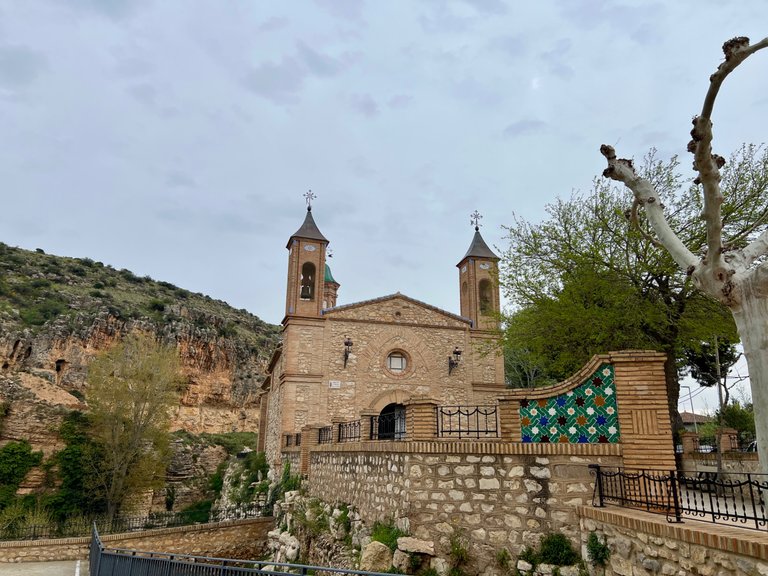

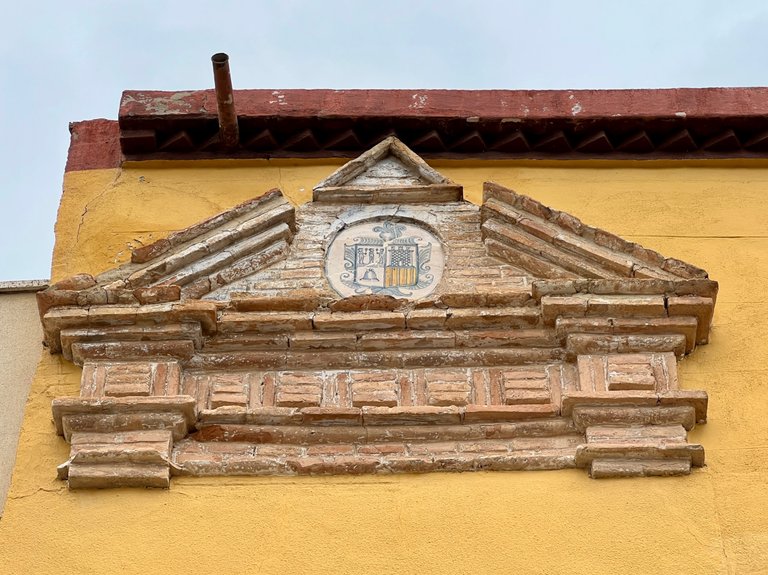
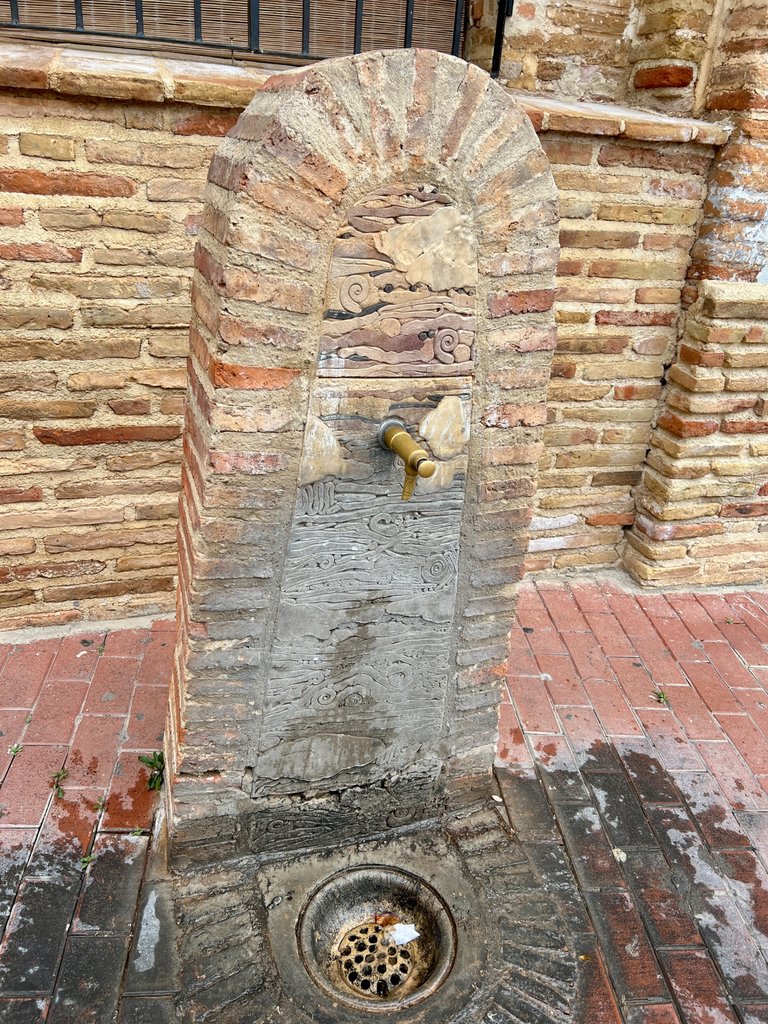
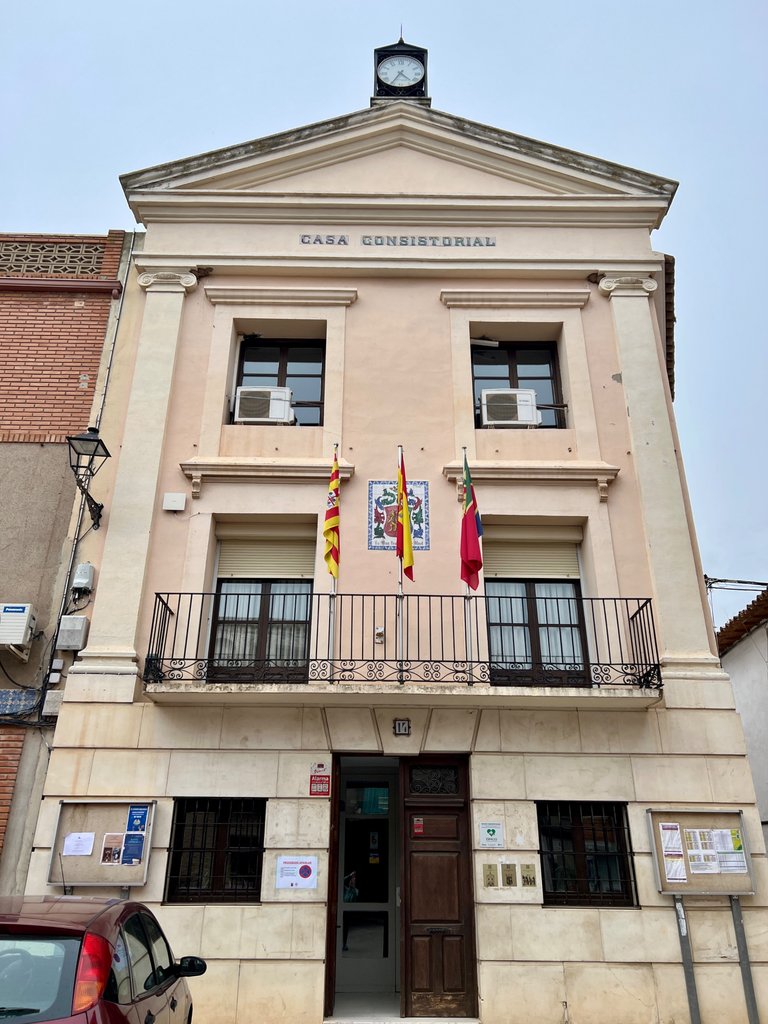
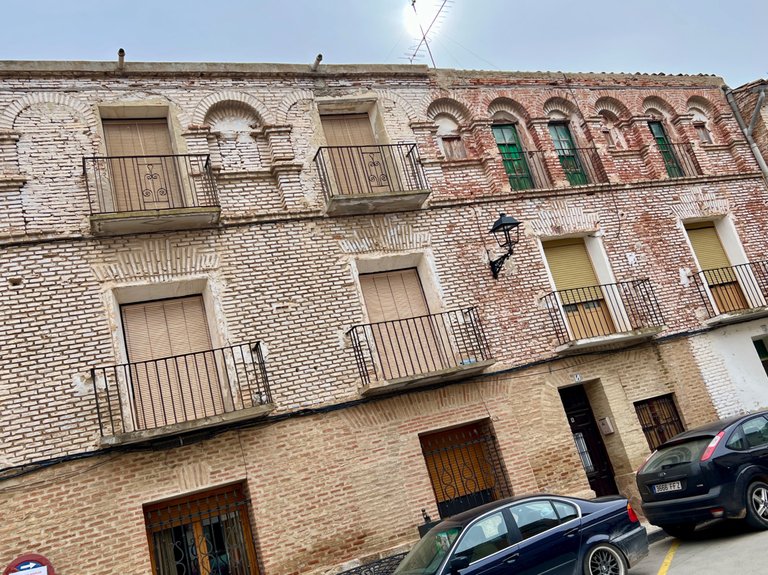

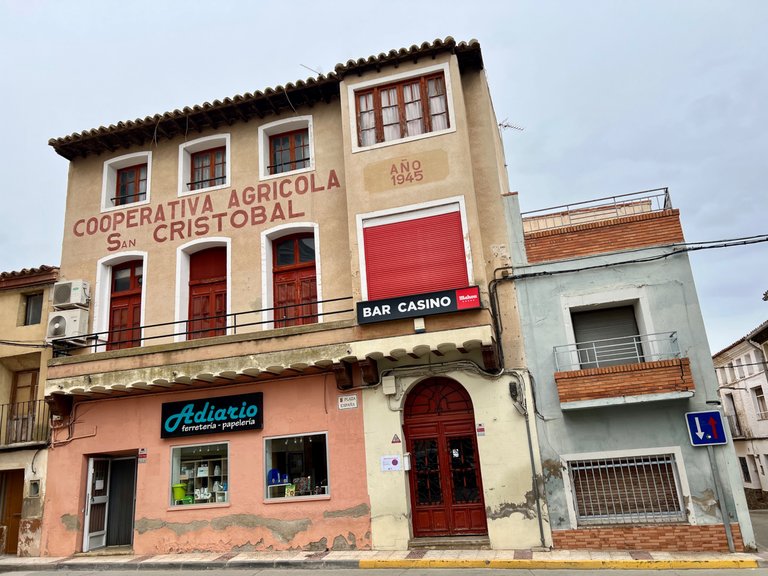


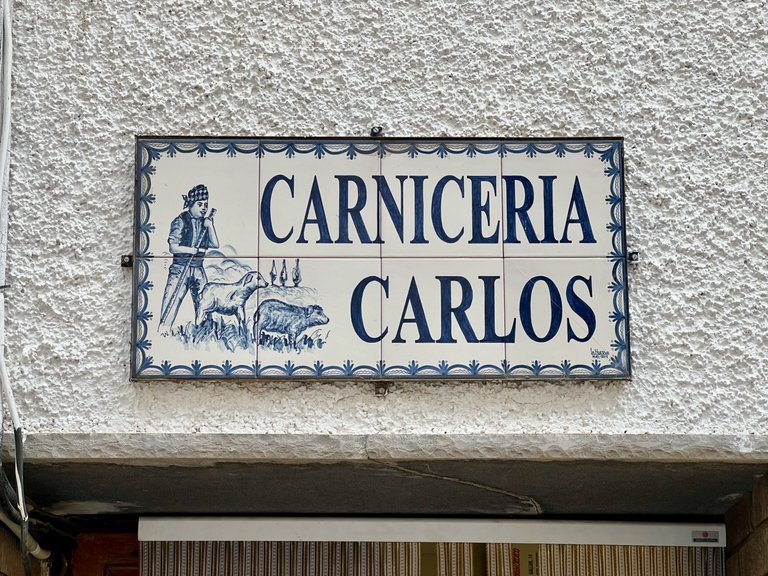
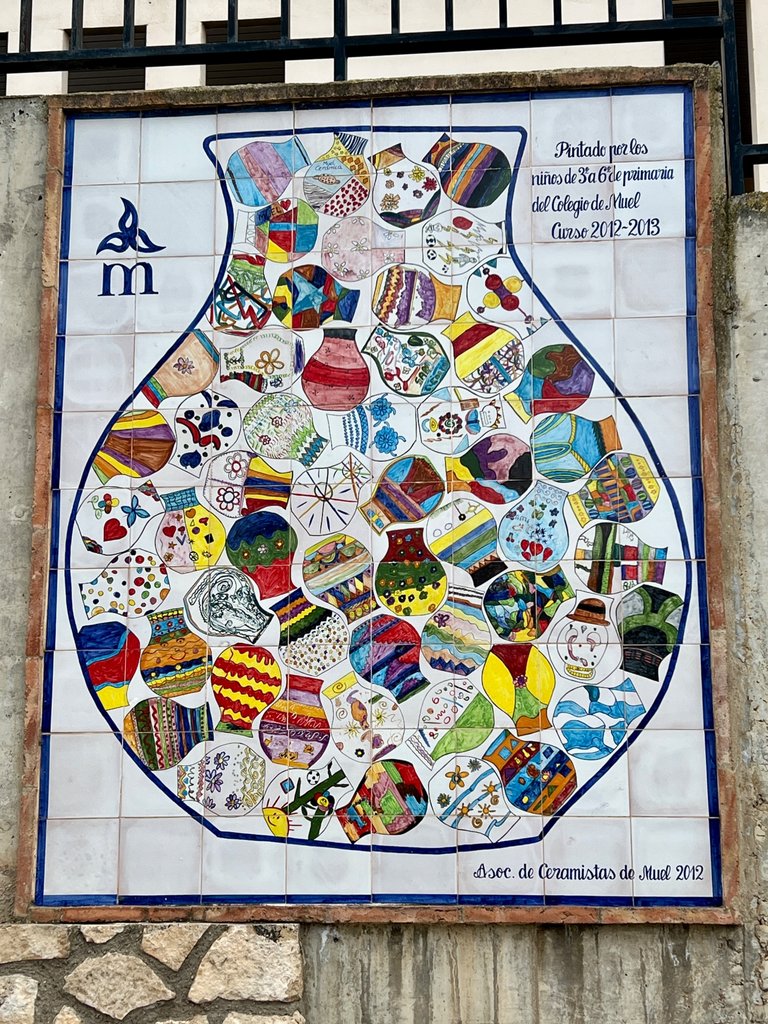

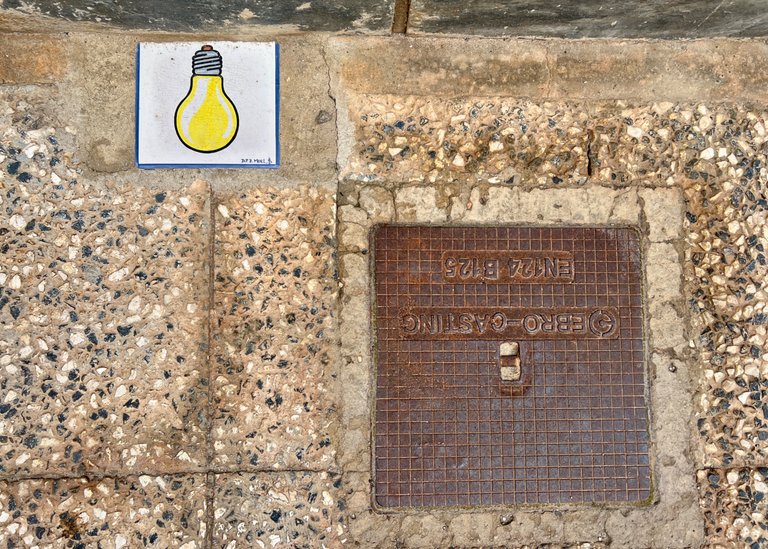
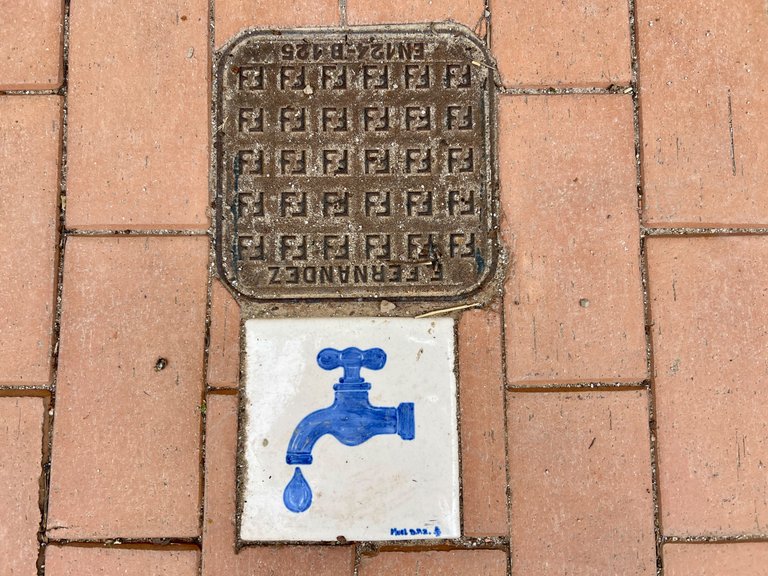


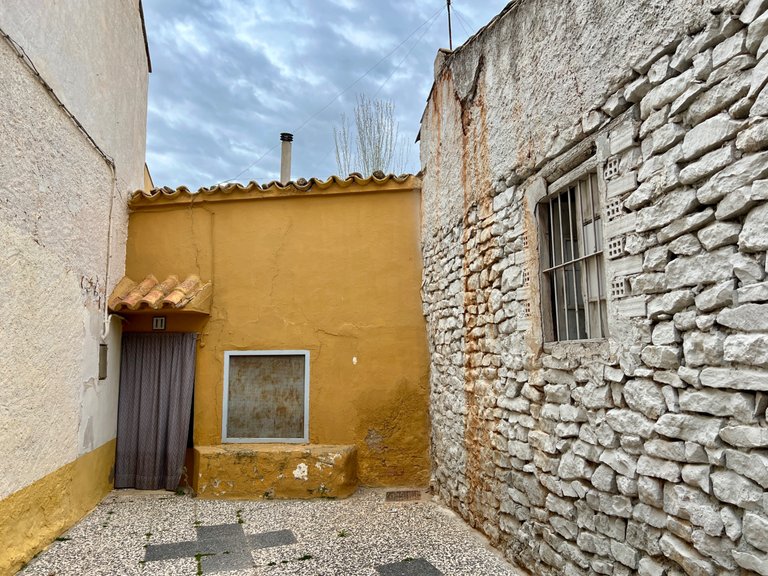

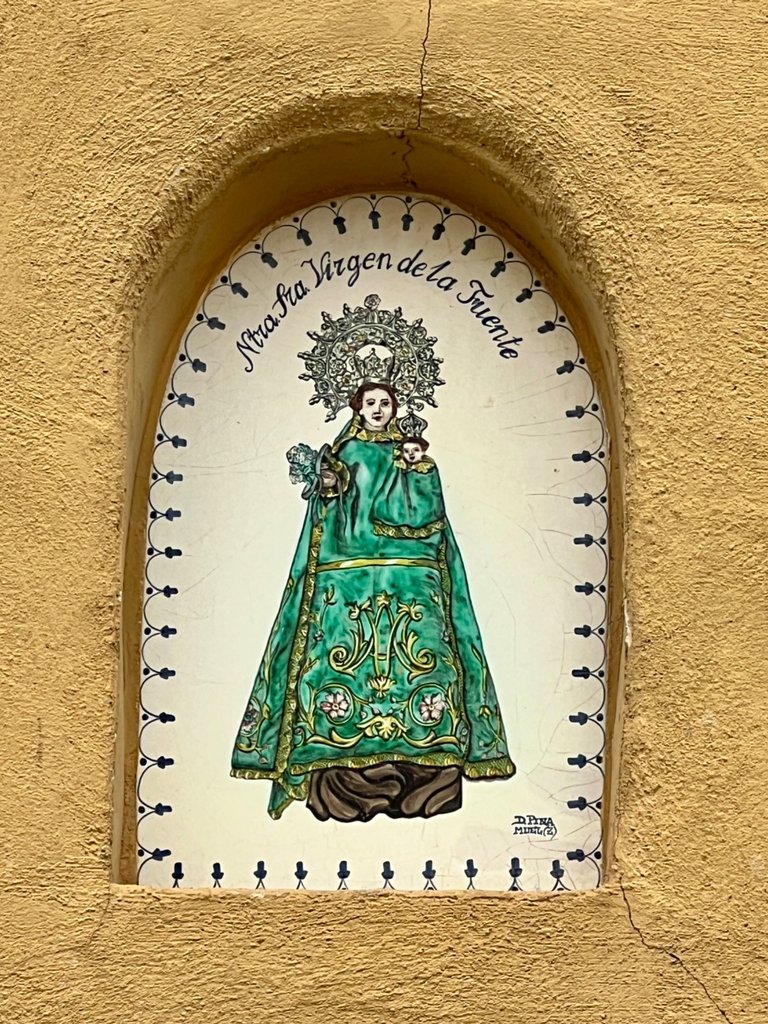
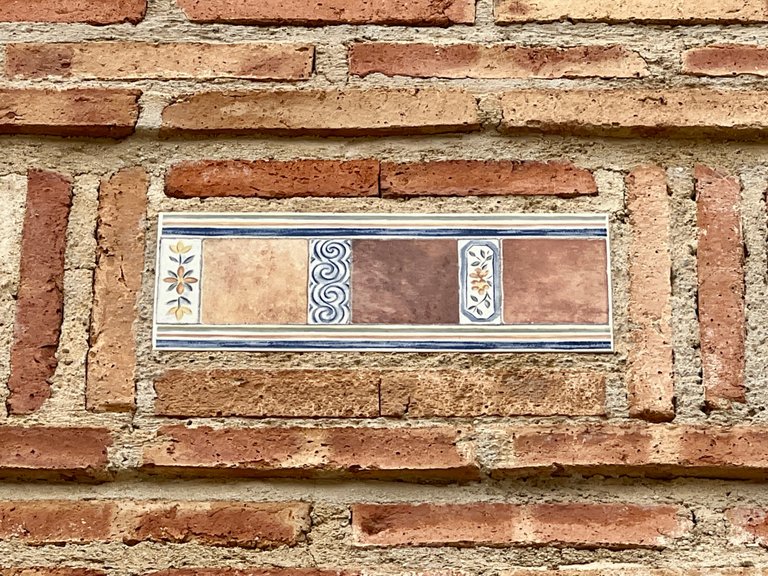
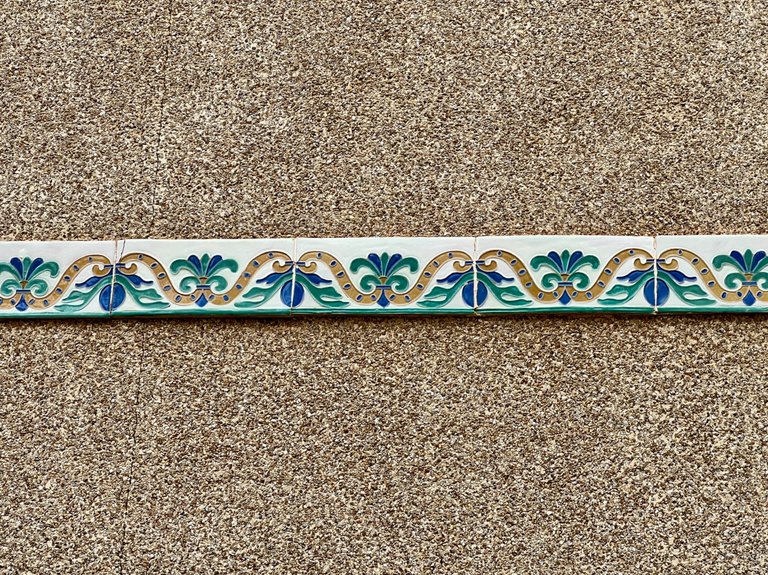
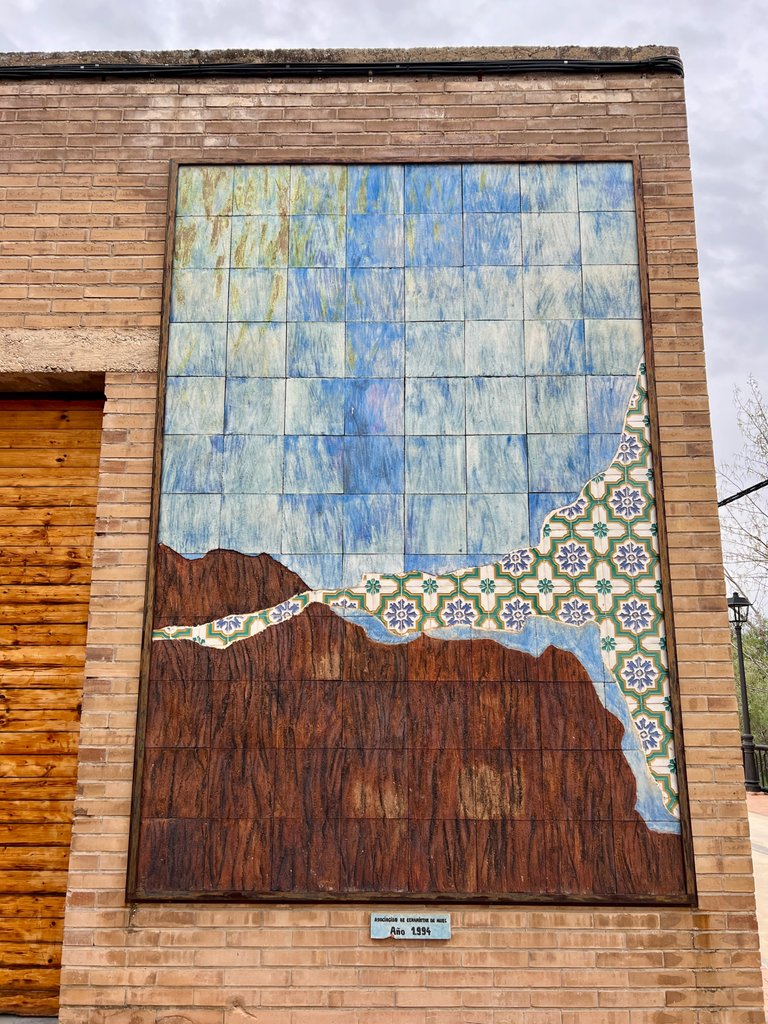
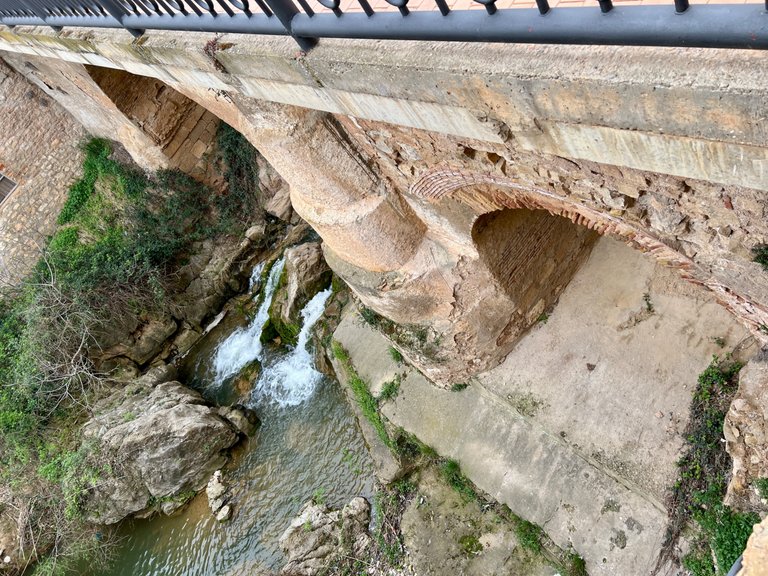
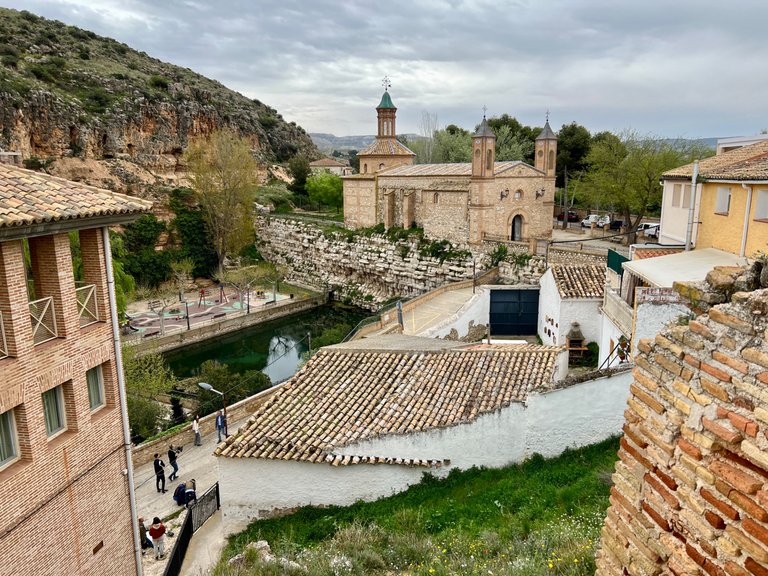
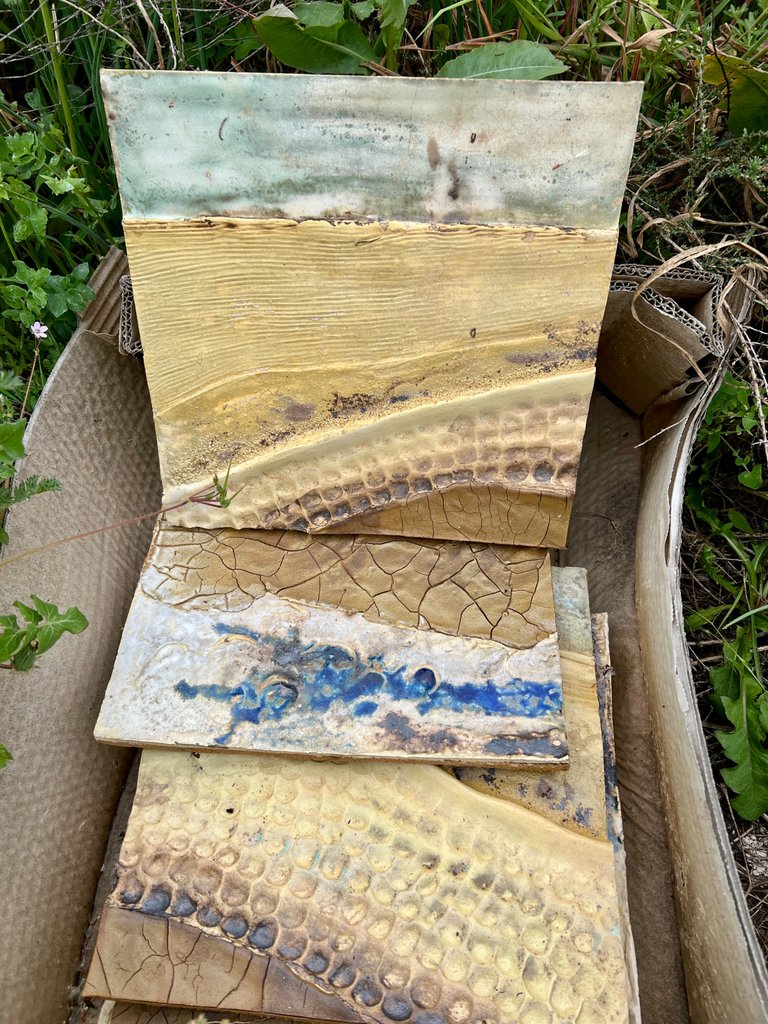



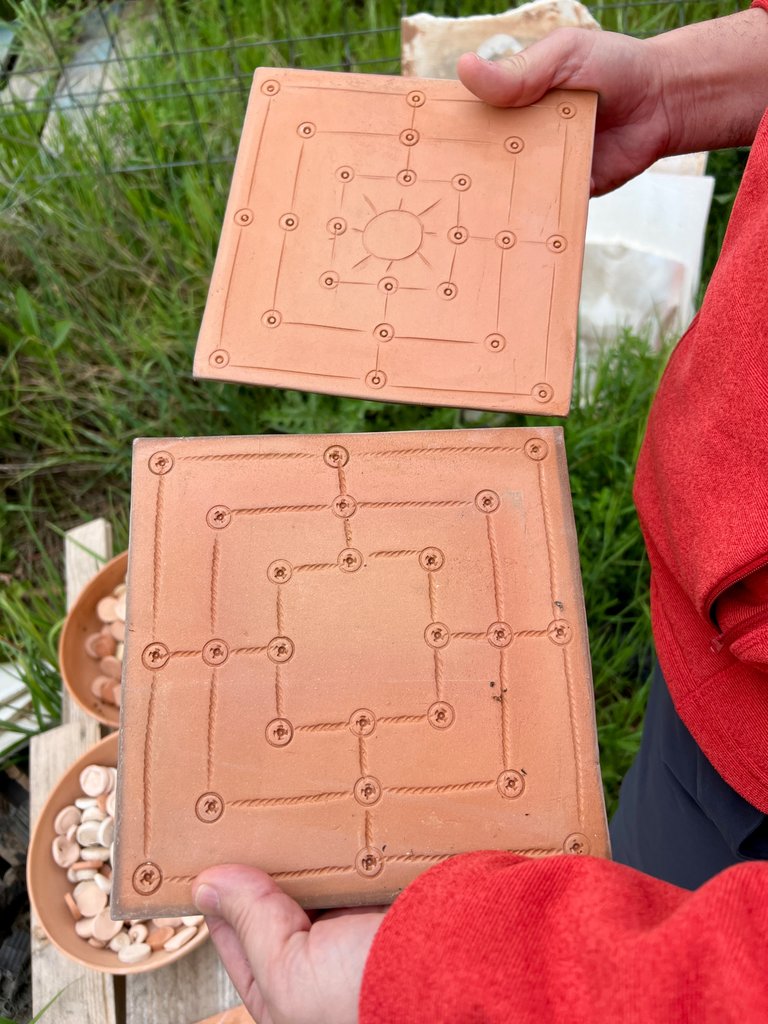
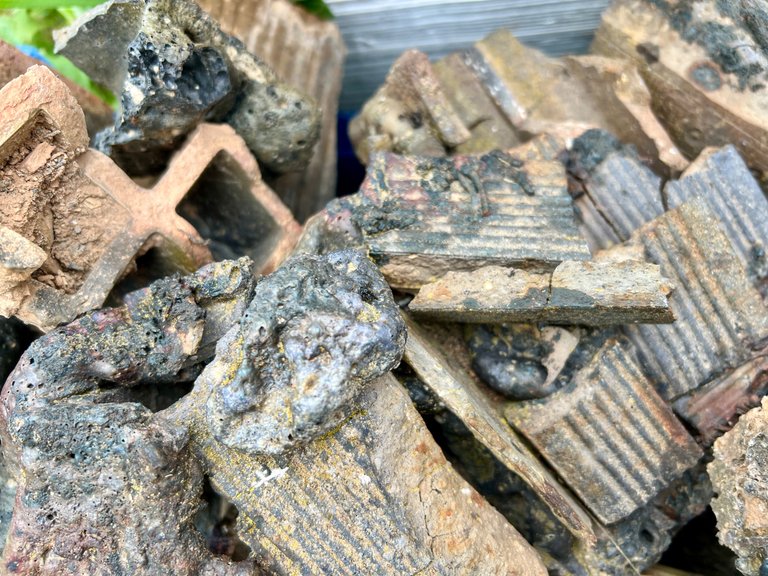
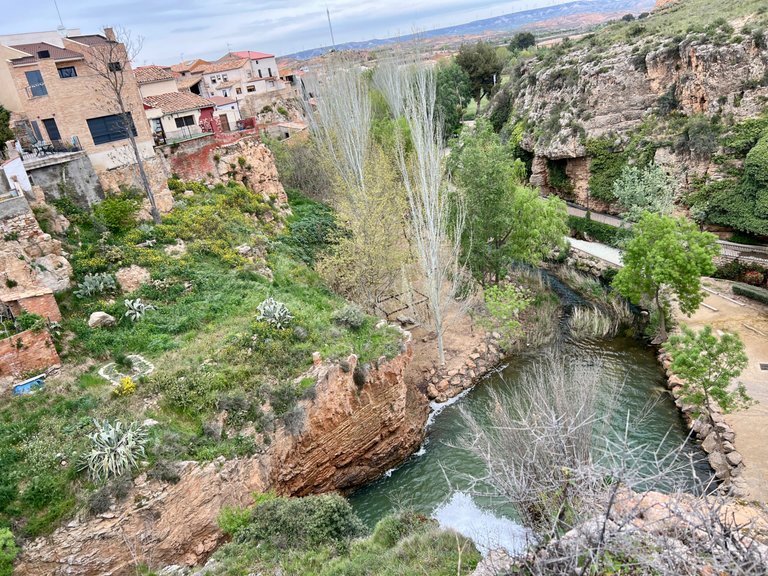
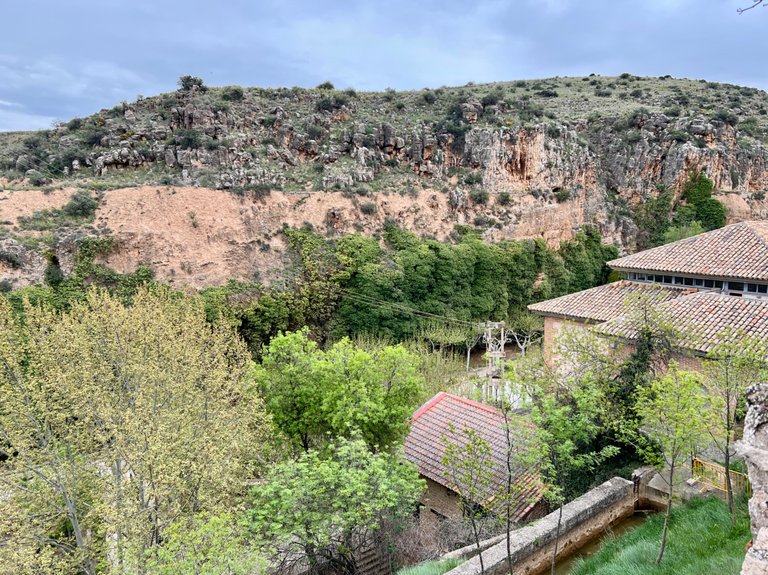




Hi @palomap3, a very art rich tour. I really liked the tower with that ceramic and all the ceramics shown in the photos. The fountain, by the way, is gorgeous.
But what has caught my attention the most was those ceramic tiles made by children .It reminded me of a project in Malmö (Sweden), where by some street you can see on the floor small mosaics related to the comic world made by school children.
Thanks for sharing this walk. A big hug.
Your reply is upvoted by @topcomment; a manual curation service that rewards meaningful and engaging comments.
More Info - Support us! - Reports - Discord Channel
Sabía que este paseo te gustaría, jeje. La idea de involucrar a los niños en ese tipo de actividades como la que también viste en Malmö me parece genial, no hay nada como dejarles que experimenten y se sientan parte de algo grande para que su motivación se multiplique. Me encantó ese detalle y había más grupos de baldosas así, solo que no quería alargar tanto el post y dejé solo un par de ejemplos.
La cerámica ha estado presente en mi familia, una de mis abuelas la trabajó por placer durante algunos años y tengo piezas suyas que son tesoros para mí. Por eso me atrae de manera especial. Gracias por la compañía y el abrazo que te envío de regreso.
Buenas noches Paloma, no voy a decir nada que ya no haya dicho: me encantó la publicación. Saber que tu abuela trabajó con la cerámica le da un plus a este paseo.
Hasta mañana!! 🤗
Cantera romanas, talleres de cerámica y casas de piedra, parece el lugar perfecto para irme a vivir allí! jajaja....Si que eran tiempos de construcciónes sobrias a las que el arte de la cerámica daba colorido y alegría...Desde niño estudie cerámica y la he trabajado mucho. En la islita donde naci hay una larga tradición de cerámica, tanto industrial como artesanal..
Pues ya tienes tema para una publicación, enseñarnos esa cerámica vuestra para poderla conocer. Más cosas que tenemos en común, señor Peña… mi abuela paterna trabajó la cerámica también, por afición, la de horas que la vi haciendo sus obra. Ahora algunas de ellas están en mi casa como la parte más importante de su herencia material por haber sido creadas con sus manos. 🤗
Bonita herencia! Yo tambien conservo alguna de cuando pequeño...
You can check out this post and your own profile on the map. Be part of the Worldmappin Community and join our Discord Channel to get in touch with other travelers, ask questions or just be updated on our latest features.
Thank you! 🙏
¡Con mucho gusto!
Gracias por usar @worldmappin 😀
💪🗺️🐝
Good morning, dear friend @palomap3
What a beautiful town! I love the architecture, the stone buildings, and the exposed adobe bricks; they're always striking.
The ceramic street art is beautiful; it gives character to these spaces.
You were able to photograph some beautiful postcards. I appreciate you letting us know about this beautiful place.
Have a wonderful day.
Yes, the ceramic details make every house or place original and different. The village is not big but it's full of beauty, big and little. Thanks for stopping by, dear!
🎉🎉🥳 Congratulations 🥳🎊🎊
Your post has just been curated and upvoted by Ecency
keep up the good work
Join us on the Ecency Discord
what a lovely variety of masonry and wall texture , those pots with colours could be toxic if it is old school stuff.
I took lots of photographs of those textures, in fact, and published a few weeks ago. I know that some old colours were toxic. A very famous painter from this area, Francisco de Goya, who also painted in the hermitage of this village, had health problems because of that. Thanks for the visit, commenting and support.
It's really a beautiful city has a very cool architecture the buildings look very amazingly interesting, and the place has a very wide view I really like it ❤️🙏
I'm glad you liked it, thank you.
You're welcome, auntie ❤️
Me fascinan estos pueblos antiguos, hermosas fotos y ula explicación para que sepamos de qué se trata. Con esto recordé un museo en aColonia del Sacramento, Uruguay, donde hay entre otros, un museo del azulejo, cerámicas, ladrillos esmaltados y otras decoraciones, algunas muy similares a las de tu visita.
Saludos @palomap3
Me encantaría visitar ese museo que comentas. Una de mis abuelas hizo cerámica por afición durante unos años y llegó a exponer algunas piezas. Ahora conservo varias obras suyas como recuerdo especial. El pueblo no es muy llamativo salvo la zona de la ermita, la presa y la cantera, pero con la inclusión de la cerámica en sus calles y edificios han tenido una estupenda idea que hace de recorrerlo una experiencia de disfrute. ¡Gracias por la visita!
!discovery shots
!PIZZA
Thank you so much! ☺️
This post was shared and voted inside the discord by the curators team of Discovery-it in collaboration with Visual Shots community.
Discovery-it is also a Witness, vote for us here
Delegate to us for passive income. Check our 80% fee-back Program
$PIZZA slices delivered:
@jlinaresp(7/15) tipped @palomap3
Come get MOONed!
Hola, Paloma, este recorrido es hermoso y ya ha quedado grabada en mi mente la importancia de la cerámica en Muel. Me encantó lo que dibujaron los niños allí. 😍Tiene mucha magia el lugar e imagino que ese equipo de realizadores audiovisuales encontraron muchísimo material para su trabajo. ¡Gracias por compartir esta experiencia!
¡A ti por acercarte a disfrutarla! El detalle de los dibujos de los niños me gustó mucho, es la mejor forma de estimularles para que continúen con la tradición que tan bien están recuperando. El pueblo no es muy grande pero tiene muchas cualidades para pasar un día agradable.
Awesome post! The people there are so artistic! So many beautiful art on the buildings!
It's a good place for a day trip, you have culture, history, landscapes and art, all together!
Que hermoso lugar y me encanta la arquitectura, además la cerámica es un arte hermoso y con historia. Que buen recorrido. Gracias por esto!!🤗
Gracias a ti por la compañía en el paseo. Es un pueblo que sorprende porque no es muy conocido y tiene un poco de todo para disfrutarlo en una jornada. La cerámica le ha vuelto a poner en el mapa y lo están aprovechando bien.
Those villages are incredible. When I worked as a sales representative, I visited several coastal villages, and their handicrafts are amazing. Good evening!
Hiya, @lauramica here, just swinging by to let you know that this post made it into our Top 3 in Travel Digest #2575.
Your post has been manually curated by the @worldmappin team. If you like what we're doing, please drop by to check out all the rest of today's great posts and consider supporting other authors like yourself and us so we can keep the project going!
Become part of our travel community:
Ooh, what a surprise! Thank you so much for this award! ❤️
You are very welcome @palomap3! it was well deserved. ☀️
Keep up the great work 💪
I love pottery so much so many fascinating pottery photos and also the village looks amazing 😍🤩
Aww I’m glad to know that you like it! Thanks for the visit and comment. 🤗
Que bonito pueblo y que hermosas fotos.
Mi madre hizo cerámica por muchos años y este lugar para ella sería mágico. Yo creo que me habría llevado conmigo varias de esas piecitas redondas, tal vez servirían para un colgante o algo así y algunos de los azulejos abandonados también se ven preciosos.
Gracias por este lindo paseo por Muel a través de tu lente. Un abrazo!
Mi abuela paterna también hizo cerámica durante unos años hasta que no pudo por los achaques de la edad. Conservo algunas de sus piezas que son mis tesoros, es emocionante guardar objetos que le vi hacer con sus manos cuando era niña. Las piezas redondas eran muy curiosas, parecían moneditas, jeje. La idea de aprovecharlas para hacer un colgante es genial, quizás era ese su destino.
Gracias a ti por la compañía. 😘🤗
Oh, that is curious that you found those boxes abandoned with the pottery, tiles and paints... I especially loved the little rounded pieces. And the mural made by children is beautiful! <3
You chose the pieces that I liked the most. The children's mural for the idea of motivating them and involving them in the culture of the place, and the round pieces because I imagined I had found a little pirate treasure. 🏴☠️😁
Those rounded little pieces actually can be the pieces of a broad game and the tiles from the next photo, the board, right?
View more
Es impresionante Como las construcciones de piedra se mantienen en el tiempo, muy interesante el hallazgo de las cerámicas, el lugar es muy histórico
La piedra ayuda a la conservación, aunque solo sea por el peso de transportarla, jeje. Sí, el lugar es bonito e ideal para pasar un día diferente. Me alegro de que te haya gustado.
Que bonito lugar @palomap3, tu recorrido fue muy interesante, la cerámica imagino es difícil de trabajar. Aquí en Cuba hay regiones donde la cerámica ocupa un lugar importante como por ejemplo La Isla de la Juventud. Allí se fabrican todo tipo de vasijas decorativas y de utilidad para el hogar. Gracias, tu paseo me gustó mucho. Un abrazo de viernes.🤗🥰❤️
Pues podríamos decir que este pueblo de Muel es nuestra Isla de la Juventud, jeje. En el post se ve la parte de las decoraciones, pero su especialidad siempre fue el menaje del hogar que después se expandió a otros objetos.
He visto trabajar la cerámica durante horas, mi abuela paterna la practicó durante años por afición y me encantaba verla trabajar el barro. Ma alegro de que hayas disfrutado del paseo como yo. ¡Buen fin de semana! ❤️🤗
Thanks so much for sharing this @palomap3 ! It felt like we were also on a tour of this marvelous place! I hope you enjoyed your trip there, just like how we enjoyed and learned about this amazing pottery village!
I’m glad you liked it, thanks for stopping by and comment.
The balance of ancient charm and revived tradition, especially in the ceramic details sprinkled all over the village, is captivating. Thank you for taking us along on this peaceful yet rich walk.
Yes, I enjoyed the walk and it’s a pleasure to share it with everyone here. A double happiness! Thanks for the visit and comment.
This spoke to me. Amazing how places and views can reflect our journey. Can’t wait for the day I get to travel and see it all with my family 😘
I’m sure you have beautiful places around you too. One of my favourite things about Hive is the possibility of travel around the world without leaving your home, hehe. I look forward to reading about your travels!
Saludos mi querida @palomap3 no tienes idea de lo agradable que es hacer el recorrido de tu mano y con tu mirada llena de detalles, simplemente encantador. Podemos pensar en esos trabajos con sus colores. La de los niños me encantó, imagen de la virgen encantadora, colores simples y hermosos. Siempre agradecida con los espacios que nos compartes y así conocemos rincones tan especiales y llenos de historia. Un abrazo.
!LADY
!LUV
!BHH
!HUESO
!LUV
View or trade
LOHtokens.@sacra97, you successfully shared 0.1000 LOH with @palomap3 and you earned 0.1000 LOH as tips. (6/13 calls)
Use !LADY command to share LOH! More details available in this post.
Agradecida de contar con tu visita y con tus palabras de aliento siempre. El pueblo no es muy grande pero tiene entretenimientos para pasar un estupendo día de excursión. Me alegra que te haya gustado. ¡Abrazotes!
Hola. Qué hermoso lugar. Acá hay un barrio, en el municipio de La Lisa, donde se hace cerámica. Este post me ha dado ganas de visitarlo. Muchas gracias.
Ya tienes idea para un futuro post, jeje. ¡Me encantaría conocer ese barrio cerámico de La Lisa!
Ven cuando quieras a Cuba 🤗. Hoy estoy en Punta Brava, un pueblo no muy lejos de El Cano.
Nice one! The village of Muel is really artistic, beautiful and somewhat historical. The structure of those buildings or houses look so sturdy. I love that brick made walls. Have a great day!
I’m glad you liked it! 🤗
Yes hope to see more.
I see that you are enjoying on a quiet place environment and yes it is okay and, that young children are there also and if we will enjoy the time has faster doing the day off.